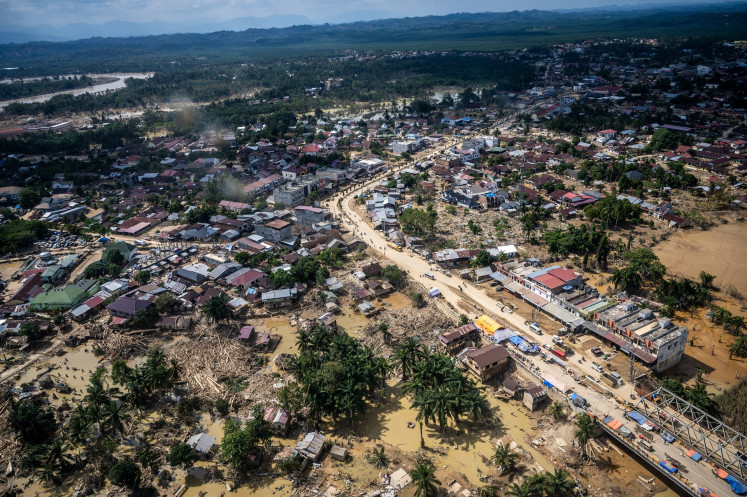Popular Reads
Top Results
Can't find what you're looking for?
View all search resultsPopular Reads
Top Results
Can't find what you're looking for?
View all search resultsBusiness resilience top agenda for future disaster risk reduction
The Fourth Session of the Global Platform conference on disaster risk reduction ended late Thursday with recommendations that recognized, for the first time, the private sector as actor and partner in disaster mitigation and reduction
Change text size
Gift Premium Articles
to Anyone
T
he Fourth Session of the Global Platform conference on disaster risk reduction ended late Thursday with recommendations that recognized, for the first time, the private sector as actor and partner in disaster mitigation and reduction.
During the conference held between May 19 and May 23 by the United Nation International Strategy for Disaster Reduction (UNISDR), international delegations and representatives concluded that disaster risk reduction had made good business sense to steer private investment towards greater resilience.
'The private sector recognizes that it has a crucial role to play in preventing and reducing disaster risk, as companies are not only exposed to natural hazards, but also often contribute to increased disaster risk while driving economic growth,' said the chair's summary.
Private sector is progressively aligning its risk reduction efforts to the Hyogo Framework for Action (HFA), and looking at business practices that promote resilience. This opens new opportunities for public-private partnerships and an overall improved risk governance.
The 2013 Global Assessment Report on Disaster Risk Reduction, issued by the United Nation (UN), has found that the transformation of the global economy over the last 40 years has led to accumulations of disaster risk. Economic losses already amount to hundreds of billion dollars annually and it is projected that losses will double by 2030.
Businesses suffer direct losses when they have invested in locating factories, offices, plants, warehouses and other facilities in locations exposed to hazards such as floods, cyclones, earthquakes or tsunamis, without adequately investing to reduce the risks.
Indonesian private sector representative during the conference, Victor Rembeth of the Disaster Resource Partnership, said that Indonesia demanded for more attention over the inclusion of small and medium businesses into disaster risk reduction programs.
'We're not only talking about response action of the private sector during a disaster, but also on how businesses, particularly the small ones, could be resilient when confronted by a disaster,' he said.
The concrete example of such resilience, among others, is awareness towards building standards, and on committed procurements from local small companies during post-disaster reconstruction efforts, according to Victor.
He also suggested that in order to raise awareness there should be a pilot project carried out by a certain city or regency, such as the one in Makassar in South Sulawesi.
The city already has a legal framework with the UNISDR to turn it into a 'resilient city', in which the city's businesses would remain less affected should it be hit by a natural disaster due to the strong standard of buildings and infrastructure.
'In terms of 'resilient city', the best practice that we can learn is from Sendai in Japan and San Francisco in United States,' said Victor.
'It's about time that attention should not only be given toward the planet and people resilience but also on profit resilience.'
The conference also concluded that the process to develop a successor arrangement to the HFA was well underway.
There was a consensus during the conference that the new instrument, informally referred to as HFA2, should introduce the necessary innovations to address the challenges of an increasing risk over the next 20 to 30 years.
The call is also raised for the HFA2 to focus on implementation, as a plan for action underpinned by a clear set of principles.
It is expected that the HFA2 will recognize the need to govern disaster risk reduction and resilience with clear responsibilities, enable local action, address climate risk and recognize a central role for science.
The World Conference on Disaster Risk Reduction, slated to be held in Japan in 2015, will become the turning point for the implementation of the HFA2.
The outcome of the conference will build its foundations on 1989 International Decade for Natural Disaster Reduction; the Yokohama Strategy and Plan of Action of 1994; the International Strategy for Disaster Reduction of 1999; and the Hyogo Framework for Action 2005-2015.









